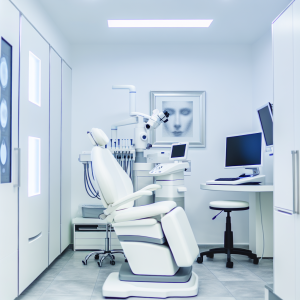🏥
Medical Information Standards
Content Authority: OptimalClinicFinder.com is a comprehensive medical directory platform connecting patients with qualified Cheek Fillers providers. Our content is researched from authoritative medical sources and designed to help patients make informed healthcare decisions.
The cheek area consists of multiple anatomical layers including skin, subcutaneous fat, facial muscles, and deeper fat compartments. The malar fat pad, buccal fat pad, and deep medial cheek fat are the primary structures that provide youthful cheek fullness and definition. As we age, these fat compartments gradually diminish and descend due to gravity, collagen breakdown, and bone remodeling.
This natural aging process typically begins in the late twenties and accelerates after age 40, resulting in flattened cheeks, nasolabial fold deepening, and loss of the defined cheekbone contour that characterizes youthful faces. Understanding this anatomy is crucial for achieving natural-looking results with cheek injections, as proper placement must restore volume to the appropriate tissue planes while respecting facial proportions and individual bone structure.
💡
Did You Know?
Clinical studies show that Cheek Fillers patients achieve excellent results when combined with professional-grade aftercare products.
Types of Dermal Fillers for Cheek Enhancement
Hyaluronic acid (HA) fillers represent the gold standard for cheek injections due to their excellent safety profile, natural-looking results, and reversibility. Leading FDA-approved options include Juvederm Voluma XC, Restylane Lyft, and RHA Collection fillers, each engineered with specific properties for midface enhancement. These products differ in their cross-linking technology, particle size, and rheological properties, affecting their lift capacity, longevity, and integration with tissue.
Calcium hydroxylapatite fillers like Radiesse offer an alternative for patients seeking longer-lasting results, providing both immediate volume and stimulating natural collagen production over time. Poly-L-lactic acid fillers work gradually by stimulating collagen synthesis, making them ideal for patients preferring subtle, progressive improvement. The choice of filler depends on individual anatomy, aesthetic goals, skin thickness, and patient preferences regarding maintenance schedules.
Injection Techniques and Treatment Protocols
Modern cheek injection techniques emphasize anatomically-based approaches that restore natural volume distribution rather than simply adding bulk. The linear threading technique involves placing filler along the zygomatic arch and malar eminence to recreate the natural cheek contour. Cross-hatching techniques build three-dimensional volume by layering filler in different tissue planes, while the fanning technique allows precise volume placement from single entry points.
Treatment protocols typically begin with conservative volume placement, allowing for assessment and potential touch-up treatments. Most patients require 1-2 syringes per cheek for optimal correction, with treatment performed using topical anesthesia and pre-mixed lidocaine in the filler for enhanced comfort. Advanced techniques like microcannula insertion minimize bruising and swelling while allowing more precise filler placement across larger tissue areas.
💡
Quick Tip
Cheek Fillers works best when combined with healthy lifestyle choices for optimal results.
Expected Results and Recovery Timeline
Cheek injection results are visible immediately following treatment, with optimal outcomes developing over 2-4 weeks as initial swelling subsides and the filler integrates with surrounding tissue. Patients typically experience mild swelling, bruising, and tenderness for 3-7 days post-treatment, with most returning to normal activities within 24-48 hours. The lifting effect on surrounding tissues often improves nasolabial folds and marionette lines as a secondary benefit.
Results from hyaluronic acid fillers typically last 18-24 months in the cheek area due to the region’s relatively stable muscle activity and good vascular supply. Individual longevity varies based on metabolism, lifestyle factors, sun exposure, and the specific product used. Regular maintenance treatments are recommended to preserve optimal results, with many patients scheduling touch-up sessions every 12-18 months.
Potential Risks and Complication Management
While cheek injections are generally safe when performed by qualified practitioners, potential complications include bruising, swelling, asymmetry, overcorrection, and rarely, vascular compromise. Bruising occurs in approximately 30-50% of patients and typically resolves within 7-10 days. Asymmetry may result from uneven filler placement or natural facial asymmetry and can often be corrected with touch-up treatments.
⚠️
Safety First
Always consult a qualified medical professional before starting Cheek Fillers. Results vary by individual.
Serious complications like vascular occlusion are extremely rare but require immediate recognition and treatment with hyaluronidase injection and supportive care. Proper anatomical knowledge, aspiration techniques, and awareness of danger zones minimize these risks. Delayed-onset nodules or granulomas can occur months after treatment and may require treatment with corticosteroids, hyaluronidase, or other interventions depending on the underlying cause.
Choosing the Right Provider and Setting Expectations
Selecting a qualified injector is crucial for safe, effective cheek enhancement. Board certification in dermatology or plastic surgery provides the foundational medical training necessary for understanding facial anatomy and managing complications. Additional training in aesthetic medicine, extensive experience with facial fillers, and a portfolio of natural-looking results indicate advanced expertise in injection techniques.
✓
Why Choose Cheek Fillers?
●
Clinically proven
●
FDA approved
●
Minimal downtime
●
Long-lasting
During consultation, experienced providers perform comprehensive facial analysis, discuss realistic outcomes, and develop individualized treatment plans. They should explain the chosen technique, expected results, potential risks, and post-treatment care instructions. Providers who rush consultations, promise unrealistic results, or lack proper medical credentials should be avoided regardless of pricing considerations.
Maximizing Results Through Proper Aftercare
Post-treatment care significantly impacts both immediate comfort and long-term results. Patients should avoid strenuous exercise, excessive heat exposure, and facial massage for 24-48 hours to minimize swelling and prevent filler migration. Cold compresses can reduce initial swelling, while arnica supplements may help minimize bruising in some patients.
Long-term maintenance includes consistent sun protection to prevent collagen breakdown, a good skincare routine with retinoids and antioxidants, and healthy lifestyle habits that support skin quality. Regular follow-up appointments allow providers to assess results, address any concerns, and plan future treatment strategies to maintain optimal cheek contour over time.
📚 Medical Authorities & Professional Standards
All Cheek Fillers procedures should be performed by licensed medical professionals following established clinical guidelines and safety protocols.
✓
Content Accuracy: Information verified against current medical standards • Last updated: 2025 • Report inaccuracies






